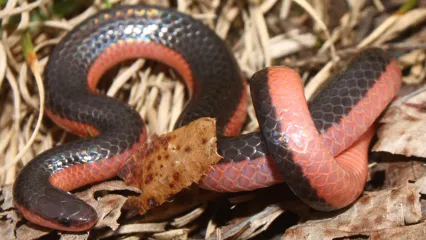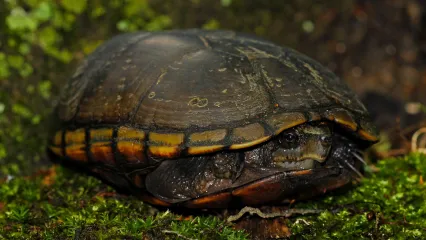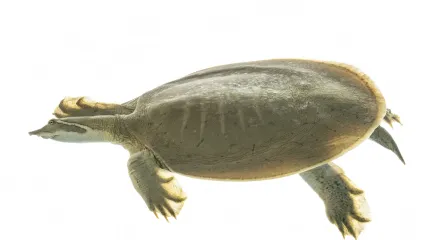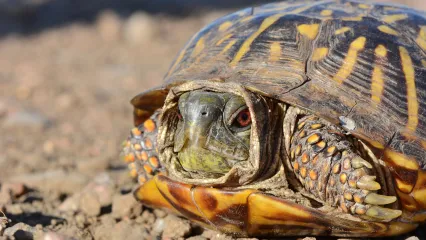
Description
Western wormsnakes are small snakes that are uniformly black or very dark brown above and orange, red, or pink below. A combination of small size, coloration and the sharp tail tip distinguishes western wormsnakes from other small snakes in the area. The orange, red, or pink underside coloration extends to the first two to three rows of scales on the sides, giving the impression that the snake has stripes on each side. This coloration extends from the underside of the jaw to the tip of the tail. Additionally, these snakes have a sharp scale on the tip of the tail. The only species with which these might be confused is the flat-headed snake. The flat-headed snake is much more common, is lighter in coloration on the dorsal surface, is much more streamlined in form, and the ventral pink coloration does not extend to the sides. Additionally, the flat-headed snake does not have the sharp terminal scale on the tail.
Size
Large adult western wormsnakes can reach fifteen inches in snout to vent length, however, most individuals are smaller than that, usually about eight inches. Hatchlings are about three inches in snout to vent length.
Habitat
In North America, the western wormsnake can be found west to east from central Oklahoma to the western edge of the Mississippi River Valley and north to south from southern Illinois to northern Louisiana.
Life Cycle
Western wormsnakes are highly secretive and most activity occurs under leaf litter and under rocks, logs, and other surface items. Western wormsnakes feed primarily on earthworms but may also eat other elongate invertebrates. Their activity season extends from March into October. Mating may occur throughout their active season, based on the observation that males contain sperm throughout the season. Females deposit one to six eggs in early summer. As in most snakes, the number of eggs increases with the size of the female. Eggs hatch in late summer.
How To Observe
These small snakes are difficult to observe on the surface. They can often be found by turning flat rocks on hillsides in undisturbed hardwood forests, especially in spring.
(This profile was created by Dr. Laurie Vitt as part of a partnership between the Wildlife Department and the Sam Noble Oklahoma Museum of Natural History. It was funded as part of a larger State Wildlife Grant to survey and inventory amphibians and reptiles of the Wildlife Management Areas of Oklahoma: T-35-P-1.)


